
Enormous Quiver Tree, Aloidendron dichotoma, and cycads in a Fallbrook, California private garden
It’s so true that passion bestows courage on the meek. A passion for plants put me on a bus one early Wednesday last June, a bus filled with cactus and succulent writers, explorers, and growers. The professional, the erudite, the specialists…and me. And they were all the best of friends, boisterously catching up on gossipy news. Queuing up behind name tags I knew from books and articles, it was all I could do to stifle a strong urge to flee. We were boarding a field trip bus leaving Pitzer College in Claremont, California, site of the Cactus and Succulent Society of America’s week-long Biennial Convention. The convention was comprised of all-day lectures, plant sales, dinners, and each day had its own price tag, including very affordable accommodations to stay the entire week in dormitories at the college. The portion I absolutely did not want to miss was this one day of touring private gardens. Other field trip choices were the Huntington and Lotusland, but it was the rare access to private gardens that had me resolutely putting one nervous foot in front of the other down that seemingly endless bus aisle until I found an open seat at the back of the bus. Not long after, a charming cylindropuntia expert, Vonn Watkins, took the empty seat next to mine and regaled me with stories the entire trip, including an account of a recent donation to the Huntington of a priceless cycad collection (probably Loran Whitelock’s, see here) and how Debra Lee Baldwin was booed in Tucson when she dissed cholla during a lecture there. (Debra tells that story here.) Plant people are the nicest people. We had a fabulous time.

Our itinerary was a mystery. First stop was just a few minutes away from the college, the Claremont garden of Rico Leon. Unfortunately, I neglected to take photos, but standout plants for me included Aloe secundiflora, just building up another bloom truss. Rico says it blooms three times a year for him. A young tree aloe, Aloidendron pillansii, with its curious hammerhead-like leaves, also had me pestering Rico for an ID. This tree aloe is also known as the Giant Quiver Tree or the Bastard Quiver Tree, to distinguish it from the real-deal Quiver Tree, Aloidendron dichotoma. It was a fairly quick stop before we headed back onto the bus to visit what I assumed would be another local garden. Instead the bus left Claremont and the San Gabriel Mountain foothills and headed 40 miles south, in heavy commuter traffic, to Orange Coast College. I thought heading to Orange County was a pretty bold move, considering the traffic, but that wasn’t to be as far south as we’d go that day. After a tour of the horticultural department and lunch at the college, we headed south again, this time to San Diego, where we toured two private gardens. Every stop on the tour was shrouded in secrecy, and the last leg to San Diego of approximately 70 miles was a slog through heavy traffic. We didn’t get back to Claremont until 8 p.m.
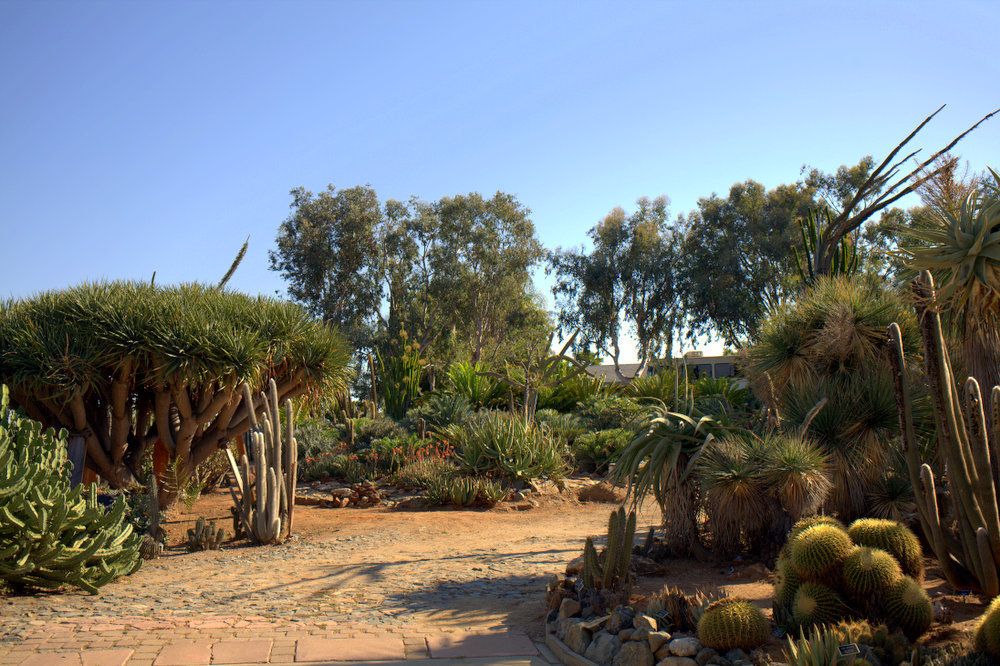
The photos on this post are from the last stop of the day, at a private garden in Fallbrook that I was later told holds the U.S.’s second largest collection of blue cycads. (Cycads are among the most endangered plants in the world. The most commonly seen is the sago palm, Cycas revoluta.) Whether due to the long drive, the heat, the suspense, or all three, we stumbled out of the bus somewhat shell-shocked into this remarkable garden thick with cycads and huge stands of cactus planted in the 1960s. I overheard a lot of sotto voce whispering, “Whose garden is this, anyway?” Not a lot of information was given about the owner, who was introduced to us briefly at the beginning of the tour, first name only, and then we were let loose to roam the paths at will.
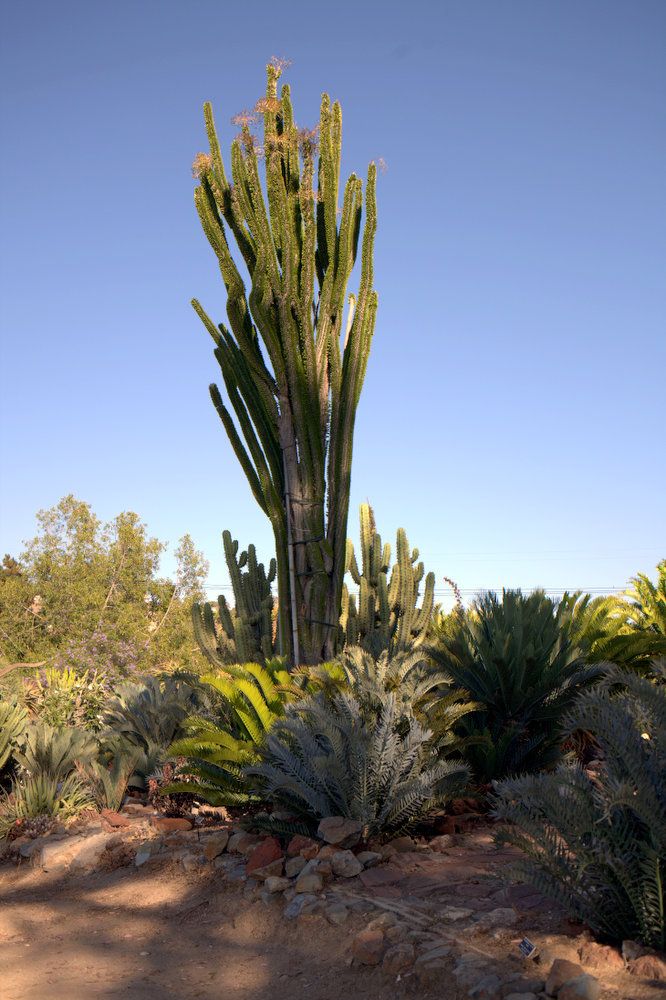

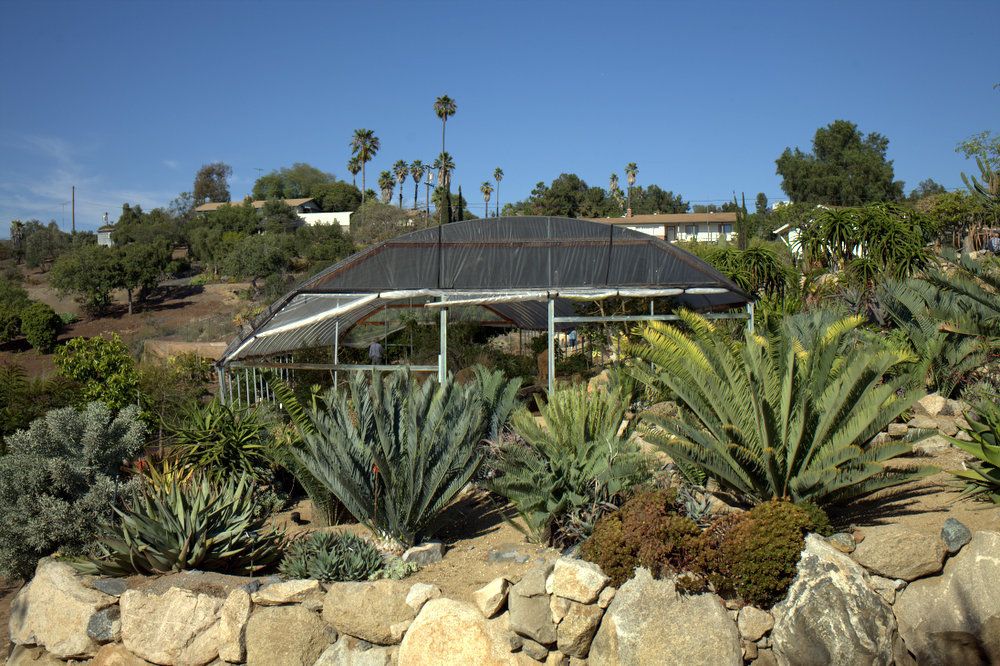
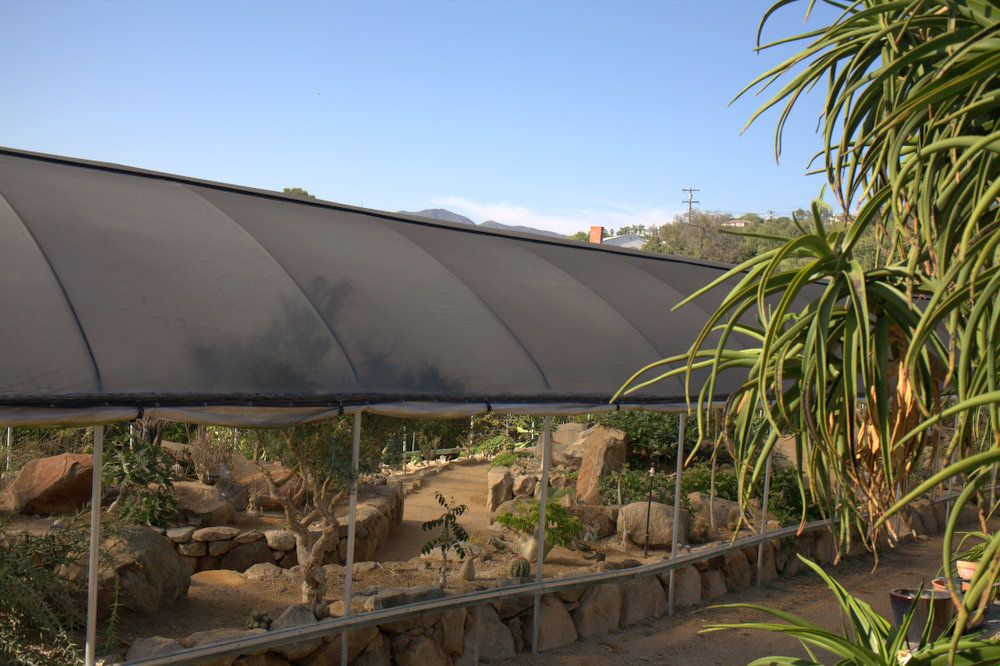
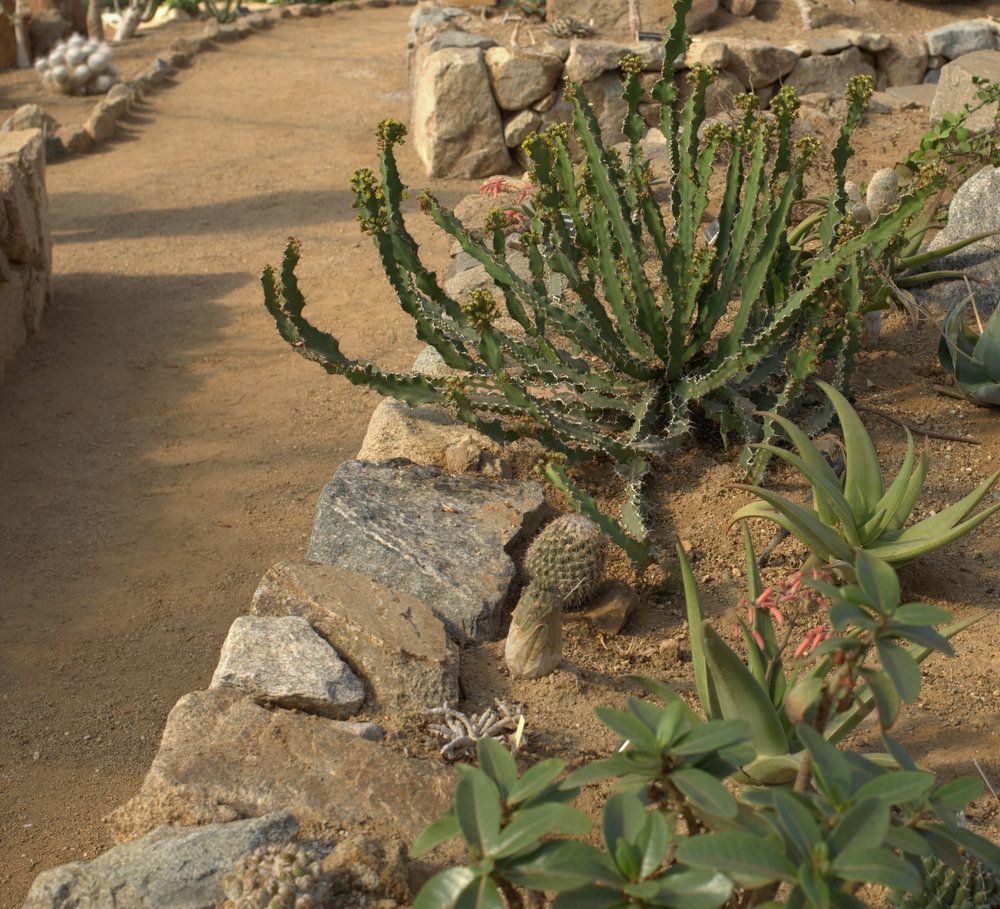

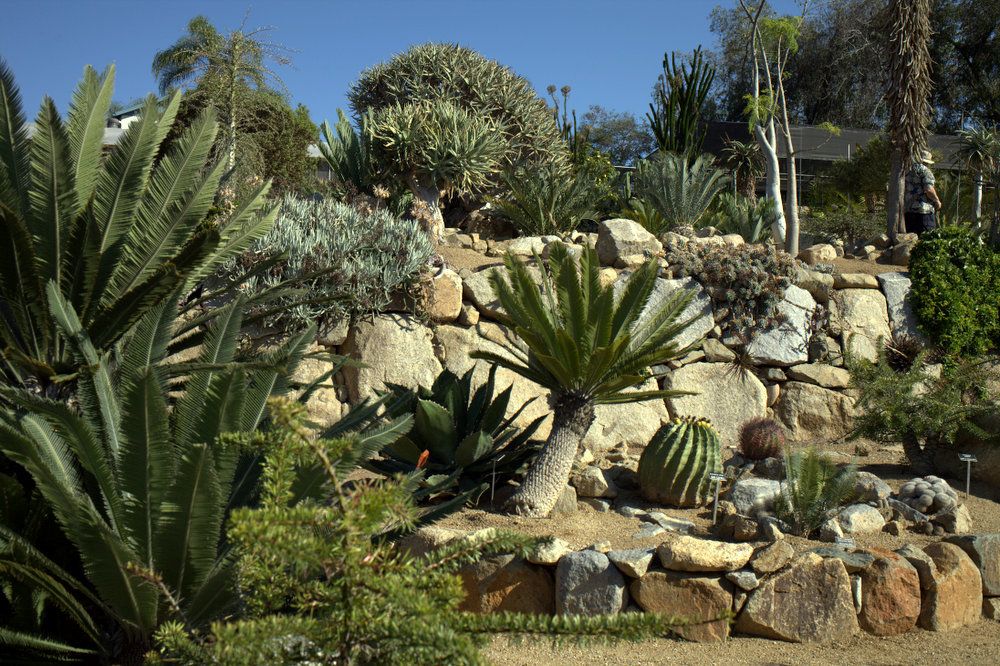
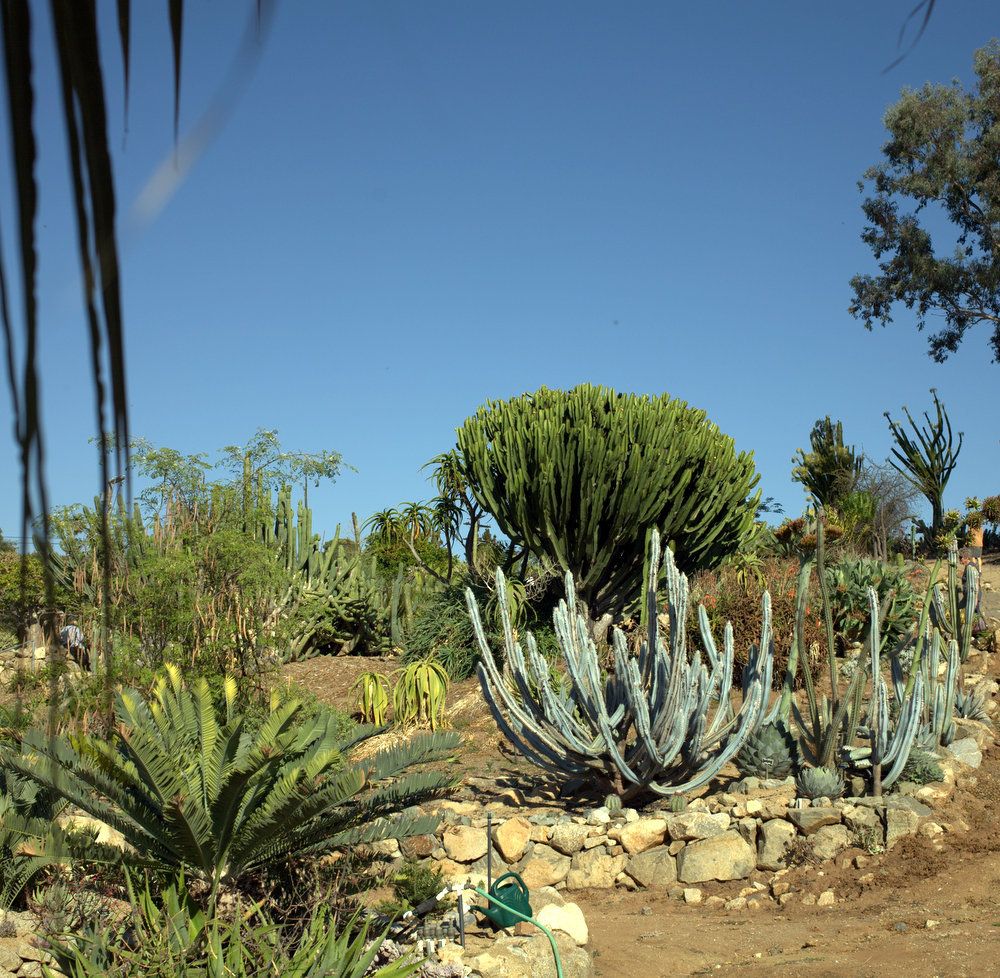
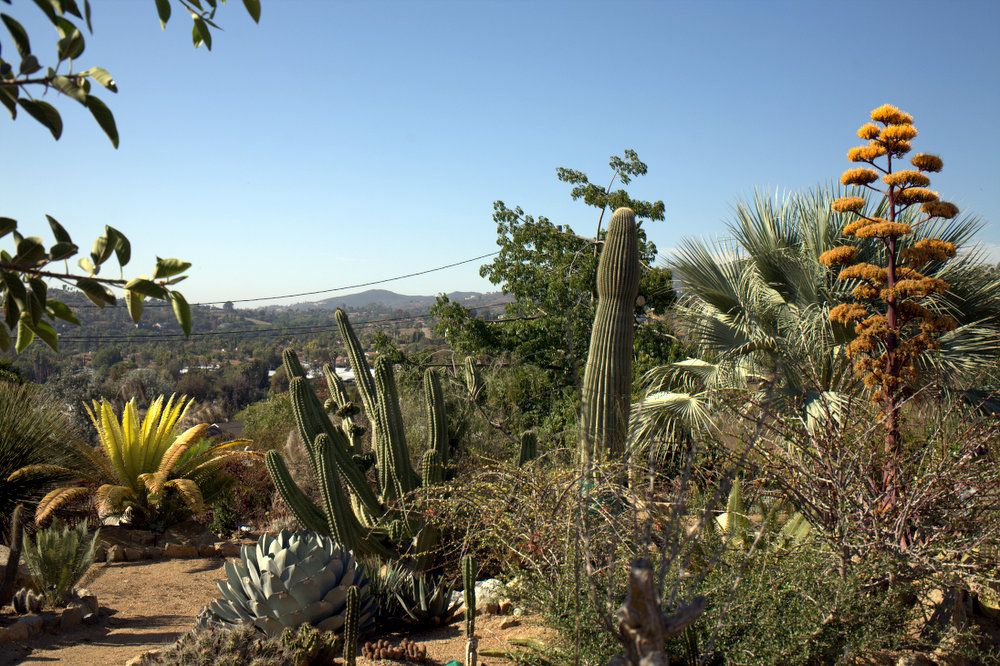
I did bump into the owner later in the tour and found him very friendly. I’m not sure when he acquired the garden, but he did say that the mature plantings were the work of the original owner in the 1960s, and he has continued to add to them. With such rare cycads in the collection, details are understandably kept sketchy, but at least it was open to tour on a warm day in June.

Happiest dichotoma ever?
Lots of cycad thieves in SD County, apparently, so hush-hush on location perfectly understandable. No photos inside that shadehouse? Drooooool.
Hoov, I found a couple inside the shadehouse and added an addendum for you.
I’ve noticed cycads going in quite a few places at the Huntington our last few visits–wonder if they are some of the Whitelock collection!
From the scuttlebutt, I think so!
Your trepidatious description of boarding the bus is exactly how I feel at the beginning of every Fling I’ve been to. What a crazy long day that must have been!
Cycads are so lovely… I don’t get to see them in person very often, so seeing great photos of them always makes my day. As usual, I wish I could sit out there with a camera and a sketchbook and just enjoy the scenery.
I don’t view you as meek at all but I am impressed that you took off on such an adventure, especially given the bit of cloak and dagger about the itinerary. I’m glad you found a companion to regale you with stories on the long bus rides, which surely must have been the toughest part of the trip. That shade house in Fallbrook looks as impressive as you’d find in any botanic garden.
Thanks for sharing your photos, I’ve yet to see any of Peder or Marilyn’s photos, and all that driving was audacious! Some incredible settings and plants there.
Congrats to you for going for it, I don’t do well when I have no control over my day – even when fabulous plants are included!
@Alison, funny you should bring that up. I kept thinking what if this bus stuck in traffic was full of Flingers? There’d be a mutiny!
@Rebecca, I wish I had more photos. The blue ones were my favorites.
@Kris, I guess “meek” is relative! And surprisingly the return bus ride was much faster. The driver took an alternate to the 5.
@I wonder what the three of you will be up to at the new garden.
@Loree, I’d do it again in a heartbeat. There’s no way to gain access to such gardens otherwise.
This is the tour I wanted to do. Glad you got to go. Did you get bitten by the cycad bug? I bought a small Encephalartos horridus seedling last year; I’ll be long dead before it ever amounts to much.
Gerhard, not bitten by the cycad bug yet but I admire seeing a collection such as this. The last photo shows a huge chartreuse specimen on the left — dunno if it’s stress that’s causing the color, but I loved the bright new leaves against the biscuit color of the older ones.
Go for the faster growing Cycads like Lepidozamia perofskyana or Ceratozamia mexicana if you don’t have time to wait for slow growing species. I grow both, but they aren’t blue foliaged.
Absolutely incredible.. fantastic photos, too. I bet you’re glad you found the courage to go!
@David, thanks for the tip on the faster kinds. The cycads are still safe from me…for now.
@Amy, the light was so harsh I wasn’t sure there would be any photos to post. Thanks for the kind words! My job has me jumping into rooms full of strangers all the time, so I don’t usually lack social courage, just on rare occasions like this.